महाभारत पर संस्कृत निबंध: Essay on Mahabharata In Sanskrit Language


Essay on Mahabharata In Sanskrit Language
इस आर्टिकल मे हम संस्कृत भाषा मे महाकाव्य महाभारत पर निबंध (Essay on Mahabharata In Sanskrit Language) आपके साथ शेअर कर रहे है। महाभारत १,००,००० छंदों से मिलकर सबसे बड़ा महाकाव्य है।जिसकी गाथा प्राचीन समय से ही हमारे भारत देश मे सुनाई जा रही है । महाभारत महाकाव्य के रचियता महर्षि वेदव्यास जी थे । यह मूल ग्रंथ संस्कृत भाषा मे लिखा गया है।
महाभारतम् महर्षिणा वेदव्यासेन विरचितः बहुप्रसिद्धः इतिहासः विद्यते। अस्मिन् ग्रन्थे कौरव-पाण्डवानां महायुद्धं मुख्य-विषयरूपेण वर्णितमस्ति। मानवजीवनस्य धर्म-अर्थ-काम-मोक्ष-रूपाः समस्तपुरुषार्थाः अत्र विशालग्रन्थे सन्निवेशिताः। अस्य महाभारतस्य भीष्मपर्वणि श्रीमद्भगवद्गीता विद्यते। भगवता कृष्णेन मोहग्रस्तम् अर्जुनं प्रति ज्ञान-कर्म-भक्ति-विषयकः उपदेशः गीतायां प्रदत्तः। अस्यां गीतायामपि अष्टादश अध्यायाः सन्ति। मानव-जीवनस्य विविधविषयाः अत्र समीचीनतया प्रतिपादिताः सन्ति। इयं विश्वजनीन-कृतिः कालजयिनी चिरन्तनी एव। प्रथमं महाभारतम् इतिहासः पुराणम् आख्यानकञ्चेति नामभिः आख्यायते स्म । साम्प्रतिकास्तु महाभारतम् आचारशास्त्रम् नीतिशास्त्रम् धर्मार्थकाममोक्षाख्यचतुर्वर्गसाधनम् चामनन्ति । भारतं पञ्चमो वेदः इति सर्वत्र प्रचारितम् । सर्वत्रास्मिन् ग्रन्थे वैष्ण्वसिद्धान्तानां प्रमुखत्वेन प्रतिपादनात् महाभारतं वैष्णवस्मृतिरप्याख्यायते । महाभारतस्य अशीतिप्रतिशतभागोऽनेकविधोपदेशमयः, विंशतिप्रतिशतभाग एवेतिहासप्रतिपादक इति अस्य नीतिशास्त्रेषु गणनोचिता | महाभारतस्य संक्षेपेण वर्णिता कथा एवं वर्तते – उत्तरभारतस्य राज्ञो दुष्यन्तस्य पुत्रस्य भरतस्य वंशधरस्य शान्तनोः प्रपौत्रो -धृतराष्टपाण्डवौ आस्ताम्। अग्रजन्मा धृतराष्टः नेत्रहीनः इति हेतोः सर्वैः पाण्डुरेव राजसिंहासनेऽभिषिक्तः। कालान्तरेण पाण्डुः पञ्चत्वं प्राप्तः। तदा पञ्चपाण्डवाः – युधिष्ठिरः – भीमः – अर्जुनः – नकुलः – सहदेवश्च निखिलानि शास्त्राणि वेदाञ्च अधीतवमन्तः । प्रकृतयः युधिष्ठिस्य शौचेन, भीमसेनस्य धृत्या, अर्जुनस्य विक्रमेण, नकुलसहदेवयोः गुरुशुश्रूषया, शान्त्या विनयेन च, समेषां तेषां शौर्यगुणेन च अति सन्तुष्टा अभवन्। पाण्डवानाम् अभ्युदयम् असहमानः दुर्योधनः छलेन तेषां राज्यम् अपहर्तुं बहुकृतप्रयत्नोऽपि विफलोऽभवत्। तदा स्वमातुलशकुनिसाहाय्येन घूतक्रीडायां कपटेन पाण्डवान् पराजित्य द्रौपदीञ्च स्वानुजेन दुःशासनेन सभामानाय्य अपमाननं कर्तुं प्रायतत । श्रीकृष्णेन रक्षिता द्रौपदी। पराजिताः पाण्डवाः कृतसमयानुसारं द्वादशवर्षपर्यन्तं वनवासस्य, एकवर्ष-अज्ञातवासस्य च कठिनाम् अवस्थाम् असहन्। ततोऽरण्यात् निवृत्य स्वराज्यम् अयाचन्त । दौत्यार्थं पाण्डवप्रतिनिधिः भूत्वा स्वयं श्रीकृष्णः गतः। परन्तु स्वार्थपरायणः दुर्योधनस्तु – ’केशव ! युद्धं विना सुच्याग्रपरिमितं भूमिमपि न दास्यामि’ इति दृढचित्तः सन् अवदत् । फलतः कौरव-पाण्डवानां मध्ये भयङ्करं युद्धं सञ्जातम्। कौरवाः पराजिताः, पाण्डवेषु ज्येष्ठः युधिष्ठिरः राजसिंहासनम् आरोहत् । कालक्रमेण अभिमन्योः पुत्रं परीक्षितं हस्तिनापुरस्य अधिपतिनं विधाय सर्वे पाण्डवाः द्रौपदी च हिमालयं प्रति अगच्छन् -तत्रैव कालकवलतां गताश्च।
♦ इन्हे भी पढे ♦
संस्कृत भाषाया: महत्वम् निबंध:
गणतंत्र दिवस पर संस्कृत में निबंध
पर्यावरण पर संस्कृत मे निबंध
♦ इन्हे भी पढे ♦
[to get latest study notes & news update join us on telegram- link given below].

For Latest Update Please join Our Social media Handle
Related Posts:
- संस्कृत निबंध: Essay on Diwali In Sanskrit || Long &…
- रस, छंद एवं अलंकार संपूर्ण जानकारी | Ras Chhand…
- संस्कृत भाषाया: महत्वम् निबंध: | Sanskrit ka…
- Hindi pedagogy Notes (Topic Wise Complete Notes) For…
- Essay on Peacock In Sanskrit || राष्ट्रीय पक्षी मोर…
- List of Essay in Sanskrit For Class 5 to 12 (NCERT)
Leave a Comment Cancel reply
Save my name, email, and website in this browser for the next time I comment.

Mahabharata [sanskrit]
699,462 words | ISBN-10: 812150094X | ISBN-13: 9788121500944
The Sanskrit edition of the Mahabharata, one of the largest epic poems ever written, consisting of 100,000 metrical verses. Consisting of 18 books, the Mahabharata details the history and legends concerning ancient India (Bharata), including a major battle campaign involving the Kauravas and the Pandavas, also known as the Kurukshetra War. This portion also contains the Bhagavad-Gita. Alternative titles: Mahābhārata (महाभारत).
Book 1 - Ādi-parva
- sub-contents: ( + / - ), other editions:.
Also see the following editions of the Sanskrit text or (alternative) English translations of the Mahabharata Ādi-parva
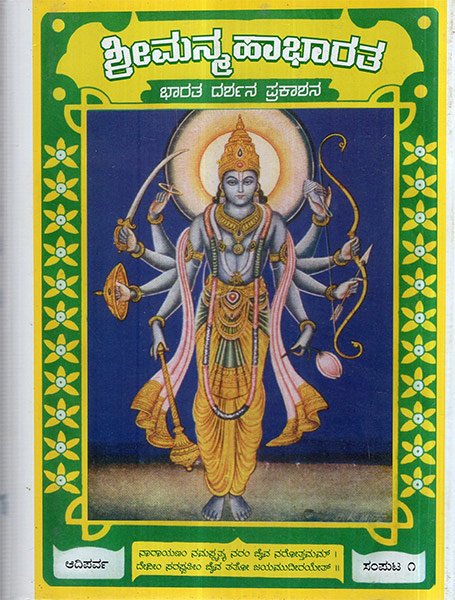
The Mahabharata in Kannada (Set of 32 Volumes) by Bharatha Darshana Bangalore (2003)
ಶ್ರೇಮಹಭಾರತ [ಮಹಾಭಾರತ]; 13907 pages;
Preview of ādi-parva in Kannada sript:
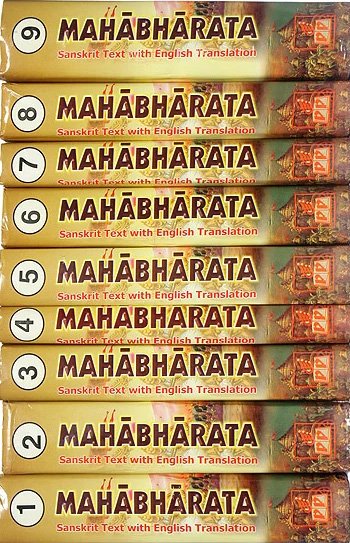
The Complete Mahabharata (9 volumes) by M. N. Dutt (2008)
6415 pages; Sanskrit Text with English Translation; [Edited By: Dr. Ishwar Chandra Sharma & Dr. O.N. Bimali] [Publisher: Parimal Publication Pvt. Ltd.]
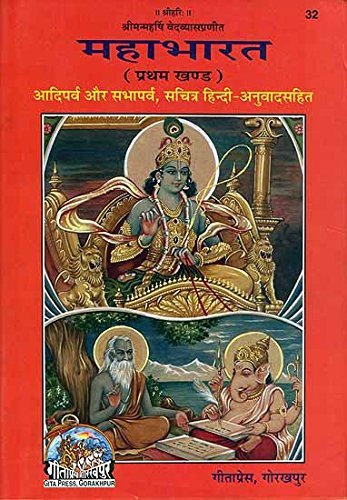
Mahabharata (Hindi Translation, Six Volumes) by Sahityacharya Pandit Ramnarayandutt Shastri Pandey "Ram" (2017)
7350 pages; [महाभारत] [Publisher: Gita Press, Gorakhpur] 44 Color and Black/white illustrations.
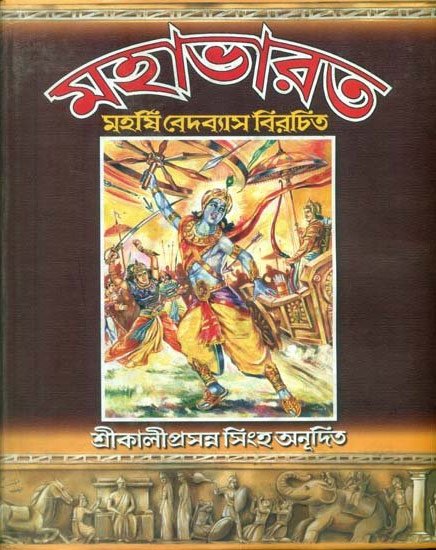
The Mahabharata in Bengali (Two Volumes) by Akshay Library, Kolkata (2019)
3049 pages; [মহাভারত] [মহার্ষী বদভ্যাস (Maharishi Vedvyas)]
Preview of ādi-parva in Bengali sript:
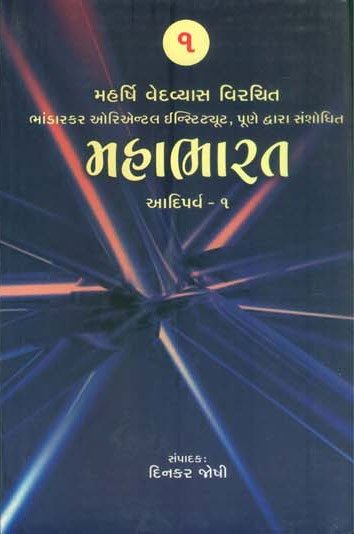
Mahabharat in Gujarati (20 Volumes) by Dinkar Joshi (દિનકર જોશી) (2010)
14252 pages; [મહાભારત] [Publisher: Pravin Prakashan Pvt. Ltd, Rajkot]
Preview of ādi-parva in Gujarati sript:
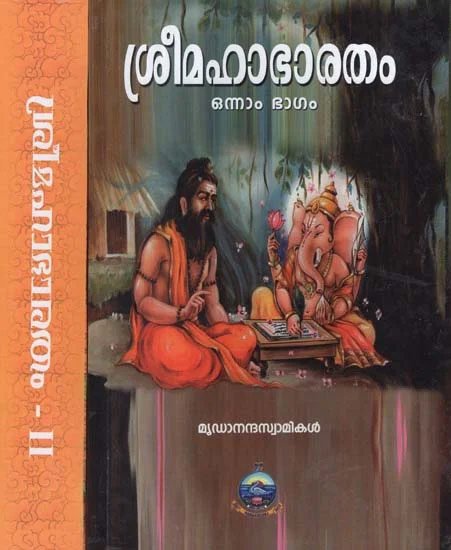
Shri Mahabharatam in Malayalam (2 volumes) by Swami Mridananda (2018)
1681 pages; [Publisher: Ramakrishna Math, Thrissur]
Preview of ādi-parva in Malayalam sript:
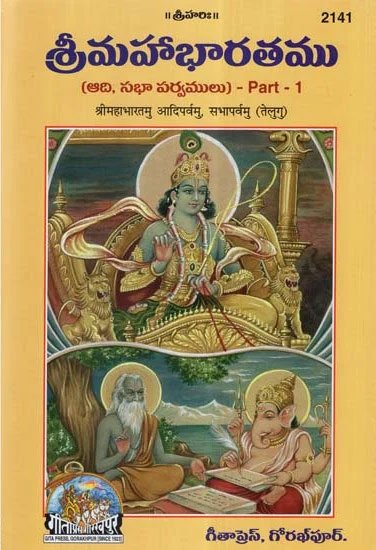
Mahabharata in Telugu (7 Volumes) by Gita Press, Gorakhpur (2018)
Preview of ādi-parva in Telugu sript:
Article published on 16 September, 2021
HindiVyakran
- नर्सरी निबंध
- सूक्तिपरक निबंध
- सामान्य निबंध
- दीर्घ निबंध
- संस्कृत निबंध
- संस्कृत पत्र
- संस्कृत व्याकरण
- संस्कृत कविता
- संस्कृत कहानियाँ
- संस्कृत शब्दावली
- पत्र लेखन
- संवाद लेखन
- जीवन परिचय
- डायरी लेखन
- वृत्तांत लेखन
- सूचना लेखन
- रिपोर्ट लेखन
- विज्ञापन
Header$type=social_icons
- commentsSystem
Mahabharat Long Essay in Sanskrit - महाभारत पर संस्कृत निबंध
Mahabharat Long Essay in Sanskrit - महाभारत पर संस्कृत निबंध : महाभारतस्य कर्तृत्वविषये प्रचुरो विवादः। अस्य परिमाणविषयेऽपि नैकमत्यं विदुषाम्। महाभारते क्वचिद् ग्रन्थोऽयं जयनाम्ना, क्वचिद् भारत-नाम्ना, क्वचिच्च महाभारत-नाम्नोल्लिख्यते। सूक्ष्मेक्षिकयाऽवलोकनेन विज्ञायते यदु महाभारतस्य प्रगते: चरणत्रयं वर्तते। प्रथम चरणे जयनामकं काव्यमेतत् 8800 श्लोकपरिमितं व्यासकृतं धर्मचर्चाम् आश्रित्य वैशम्पायनाय श्रावितमभूत्। द्वितीयचरो भारतनामक महाकाव्यमेतद् वैशम्पायनकृतं 24 सहस्रश्लोकपरिमितं जनमेजयस्य नागयज्ञे जनमेजयाय श्रावितमभूत्।
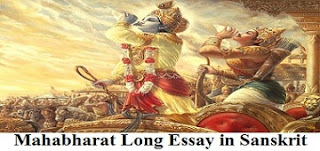
100+ Social Counters$type=social_counter
- fixedSidebar
- showMoreText
/gi-clock-o/ WEEK TRENDING$type=list
- गम् धातु के रूप संस्कृत में – Gam Dhatu Roop In Sanskrit गम् धातु के रूप संस्कृत में – Gam Dhatu Roop In Sanskrit यहां पढ़ें गम् धातु रूप के पांचो लकार संस्कृत भाषा में। गम् धातु का अर्थ होता है जा...

- दो मित्रों के बीच परीक्षा को लेकर संवाद - Do Mitro ke Beech Pariksha Ko Lekar Samvad Lekhan दो मित्रों के बीच परीक्षा को लेकर संवाद लेखन : In This article, We are providing दो मित्रों के बीच परीक्षा को लेकर संवाद , परीक्षा की तैयार...
RECENT WITH THUMBS$type=blogging$m=0$cate=0$sn=0$rm=0$c=4$va=0
- 10 line essay
- 10 Lines in Gujarati
- Aapka Bunty
- Aarti Sangrah
- Akbar Birbal
- anuched lekhan
- asprishyata
- Bahu ki Vida
- Bengali Essays
- Bengali Letters
- bengali stories
- best hindi poem
- Bhagat ki Gat
- Bhagwati Charan Varma
- Bhishma Shahni
- Bhor ka Tara
- Boodhi Kaki
- Chandradhar Sharma Guleri
- charitra chitran
- Chief ki Daawat
- Chini Feriwala
- chitralekha
- Chota jadugar
- Claim Kahani
- Dairy Lekhan
- Daroga Amichand
- deshbhkati poem
- Dharmaveer Bharti
- Dharmveer Bharti
- Diary Lekhan
- Do Bailon ki Katha
- Dushyant Kumar
- Eidgah Kahani
- Essay on Animals
- festival poems
- French Essays
- funny hindi poem
- funny hindi story
- German essays
- Gujarati Nibandh
- gujarati patra
- Guliki Banno
- Gulli Danda Kahani
- Haar ki Jeet
- Harishankar Parsai
- hindi grammar
- hindi motivational story
- hindi poem for kids
- hindi poems
- hindi rhyms
- hindi short poems
- hindi stories with moral
- Information
- Jagdish Chandra Mathur
- Jahirat Lekhan
- jainendra Kumar
- jatak story
- Jayshankar Prasad
- Jeep par Sawar Illian
- jivan parichay
- Kashinath Singh
- kavita in hindi
- Kedarnath Agrawal
- Khoyi Hui Dishayen
- Kya Pooja Kya Archan Re Kavita
- Madhur madhur mere deepak jal
- Mahadevi Varma
- Mahanagar Ki Maithili
- Main Haar Gayi
- Maithilisharan Gupt
- Majboori Kahani
- malayalam essay
- malayalam letter
- malayalam speech
- malayalam words
- Mannu Bhandari
- Marathi Kathapurti Lekhan
- Marathi Nibandh
- Marathi Patra
- Marathi Samvad
- marathi vritant lekhan
- Mohan Rakesh
- Mohandas Naimishrai
- MOTHERS DAY POEM
- Narendra Sharma
- Nasha Kahani
- Neeli Jheel
- nursery rhymes
- odia letters
- Panch Parmeshwar
- panchtantra
- Parinde Kahani
- Paryayvachi Shabd
- Poos ki Raat
- Portuguese Essays
- Punjabi Essays
- Punjabi Letters
- Punjabi Poems
- Raja Nirbansiya
- Rajendra yadav
- Rakh Kahani
- Ramesh Bakshi
- Ramvriksh Benipuri
- Rani Ma ka Chabutra
- Russian Essays
- Sadgati Kahani
- samvad lekhan
- Samvad yojna
- Samvidhanvad
- Sandesh Lekhan
- sanskrit biography
- Sanskrit Dialogue Writing
- sanskrit essay
- sanskrit grammar
- sanskrit patra
- Sanskrit Poem
- sanskrit story
- Sanskrit words
- Sara Akash Upanyas
- Savitri Number 2
- Shankar Puntambekar
- Sharad Joshi
- Shatranj Ke Khiladi
- short essay
- spanish essays
- Striling-Pulling
- Subhadra Kumari Chauhan
- Subhan Khan
- Suchana Lekhan
- Sudha Arora
- Sukh Kahani
- suktiparak nibandh
- Suryakant Tripathi Nirala
- Swarg aur Prithvi
- Tasveer Kahani
- Telugu Stories
- UPSC Essays
- Usne Kaha Tha
- Vinod Rastogi
- Vrutant lekhan
- Wahi ki Wahi Baat
- Yahi Sach Hai kahani
- Yoddha Kahani
- Zaheer Qureshi
- कहानी लेखन
- कहानी सारांश
- तेनालीराम
- मेरी माँ
- लोककथा
- शिकायती पत्र
- हजारी प्रसाद द्विवेदी जी
- हिंदी कहानी
RECENT$type=list-tab$date=0$au=0$c=5
Replies$type=list-tab$com=0$c=4$src=recent-comments, random$type=list-tab$date=0$au=0$c=5$src=random-posts, /gi-fire/ year popular$type=one.
- अध्यापक और छात्र के बीच संवाद लेखन - Adhyapak aur Chatra ke Bich Samvad Lekhan अध्यापक और छात्र के बीच संवाद लेखन : In This article, We are providing अध्यापक और विद्यार्थी के बीच संवाद लेखन and Adhyapak aur Chatra ke ...

Join with us
Footer Social$type=social_icons
- loadMorePosts
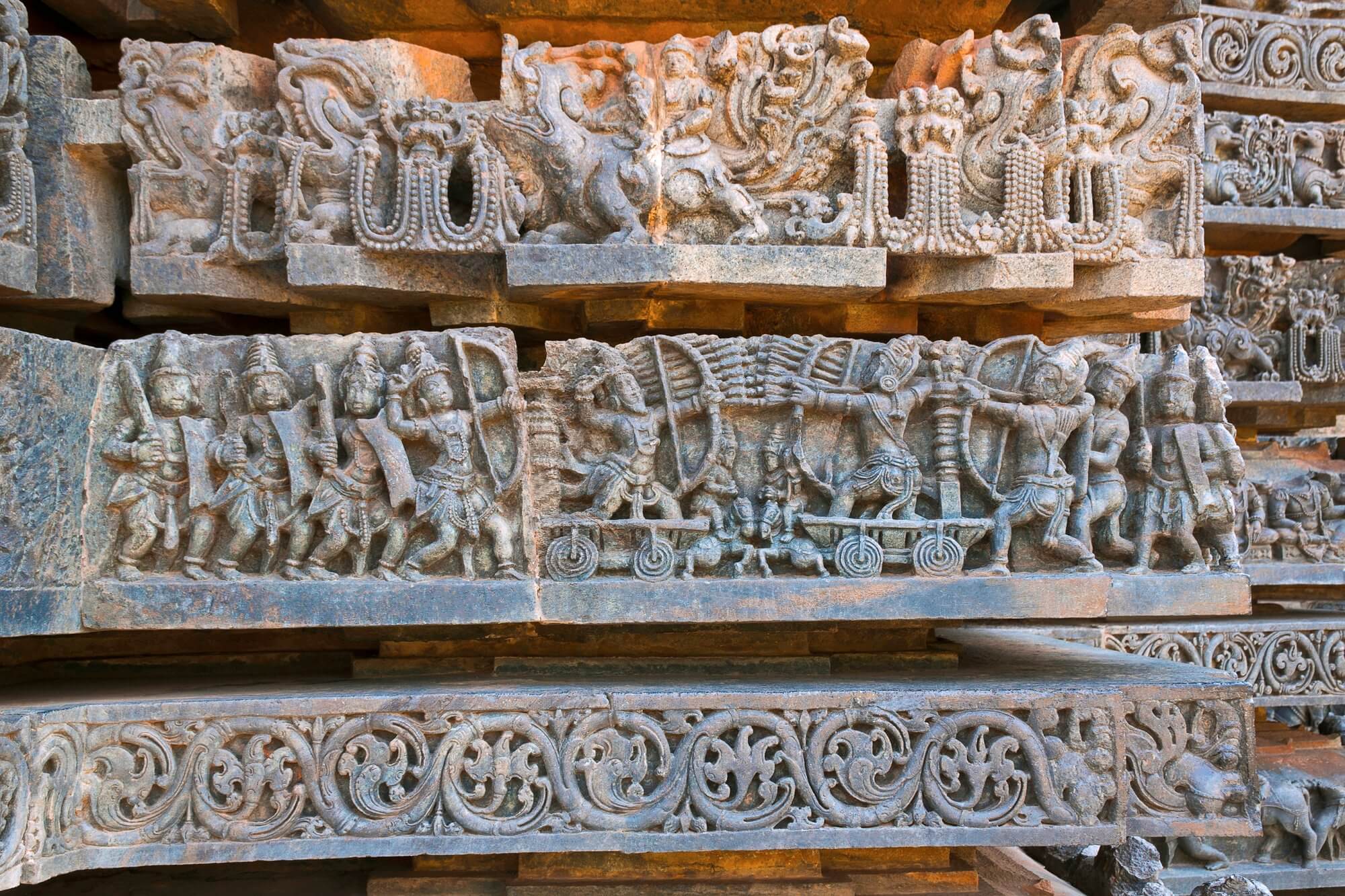
Essay On Mahabharata in Sanskrit
महाभारतम् महर्षिणा वेदव्यासेन विरचितः बहुप्रसिद्धः इतिहासः विद्यते। अस्मिन् ग्रन्थे कौरव-पाण्डवानां महायुद्धं मुख्य-विषयरूपेण वर्णितमस्ति। मानवजीवनस्य धर्म-अर्थ-काम-मोक्ष-रूपाः समस्तपुरुषार्थाः अत्र विशालग्रन्थे सन्निवेशिताः। अस्य महाभारतस्य भीष्मपर्वणि श्रीमद्भगवद्गीता विद्यते। भगवता कृष्णेन मोहग्रस्तम् अर्जुनं प्रति ज्ञान-कर्म-भक्ति-विषयकः उपदेशः गीतायां प्रदत्तः। अस्यां गीतायामपि अष्टादश अध्यायाः सन्ति। मानव-जीवनस्य विविधविषयाः अत्र समीचीनतया प्रतिपादिताः सन्ति। इयं विश्वजनीन-कृतिः कालजयिनी चिरन्तनी एव। प्रथमं महाभारतम् इतिहासः पुराणम् आख्यानकञ्चेति नामभिः आख्यायते स्म । साम्प्रतिकास्तु महाभारतम् आचारशास्त्रम् नीतिशास्त्रम् धर्मार्थकाममोक्षाख्यचतुर्वर्गसाधनम् चामनन्ति । भारतं पञ्चमो वेदः इति सर्वत्र प्रचारितम् । सर्वत्रास्मिन् ग्रन्थे वैष्ण्वसिद्धान्तानां प्रमुखत्वेन प्रतिपादनात् महाभारतं वैष्णवस्मृतिरप्याख्यायते । महाभारतस्य अशीतिप्रतिशतभागोऽनेकविधोपदेशमयः, विंशतिप्रतिशतभाग एवेतिहासप्रतिपादक इति अस्य नीतिशास्त्रेषु गणनोचिता | महाभारतस्य संक्षेपेण वर्णिता कथा एवं वर्तते – उत्तरभारतस्य राज्ञो दुष्यन्तस्य पुत्रस्य भरतस्य वंशधरस्य शान्तनोः प्रपौत्रो -धृतराष्टपाण्डवौ आस्ताम्। अग्रजन्मा धृतराष्टः नेत्रहीनः इति हेतोः सर्वैः पाण्डुरेव राजसिंहासनेऽभिषिक्तः। कालान्तरेण पाण्डुः पञ्चत्वं प्राप्तः। तदा पञ्चपाण्डवाः – युधिष्ठिरः – भीमः – अर्जुनः – नकुलः – सहदेवश्च निखिलानि शास्त्राणि वेदाञ्च अधीतवमन्तः । प्रकृतयः युधिष्ठिस्य शौचेन, भीमसेनस्य धृत्या, अर्जुनस्य विक्रमेण, नकुलसहदेवयोः गुरुशुश्रूषया, शान्त्या विनयेन च, समेषां तेषां शौर्यगुणेन च अति सन्तुष |
Also Read: Essay on Himalaya Mountain Essay on Ideal Citizen Essay on Indian Heritage Essay on Janmbhumi Essay on Kalidas Essay on Kalidas
Leave a Comment Cancel reply
Critical Edition Prepared by Scholars at Bhandarkar Oriental Research Institute BORI Entered by Prof. Tokunaga and then maintained/updated by Prof. John Smith
Devanagari (and other indian scripts from each sarga page).
- १ आदिपर्वम्
- २ सभापर्वम्
- ३ आरण्यकपर्वम्
- ४ विराटपर्वम्
- ५ उद्योगपर्वम्
- ६ भीष्मपर्वम्
- ७ द्रोणपर्वम्
- ८ कर्णपर्वम्
- ९ शाल्यपर्वम्
- १० सौप्तिकपर्वम्
- ११ स्त्रीपर्वम्
- १२ शान्तिपर्वम्
- १३ अनुशासनपर्वम्
- १४ अश्वमेधिकपर्वम्
- १५ आश्रमवासिकपर्वम्
- १६ मौसलपर्वम्
- १७ महाप्रस्थानिकपर्वम्
- १८ स्वर्गारोहणपर्वम्
Devanagari PDF
- 1 aadiparva
- 2 sabhaaparva
- 3 vanaparva
- 4 viraaTaparva
- 5 udyogaparva
- 6 bhiishhmaparva
- 7 droNaparva
- 8 karNaparva
- 9 shalyaparva
- 10 sauptikaparva
- 11 striiparva
- 12 shaantiparva
- 13 anushaasanaparva
- 14 ashvamedhikaparva
- 15 aashramavaasikaparva
- 16 mausalaparva
- 17 mahaaprasthaanikaparva
- 18 svargaarohaNaparva
ITRANS Text
Xdvng font html.

Prof. John Smith's Mahabharata Page gives details of the recent project regarding the proofreading and correction of the electronic text of the critical edition of Mahabharata. The updated etext files are available in unicode devanagari also. You need to register at his website to download all the latest files including the appendix and star passages.
ESSAY KI DUNIYA
HINDI ESSAYS & TOPICS
Essay on Mahabharata in Sanskrit – महाभारत पर संस्कृत निबंध
June 11, 2019 by essaykiduniya
Here you will Get Information about Mahabharata in Sanskrit Language. Get Essay on Mahabharata in Sanskrit Language – महाभारत पर संस्कृत निबंध

संस्कृतसाहित्ये रामायणं महाभारत चेत्येते हे ऐतिहासिके महाकाव्ये उपलभ्येते ।। एतयोर्महाभारतं महर्षेवेदव्यासस्य श्रेण्यसंस्कृत साहित्ये अनुपमं विशालतमं च महाकाव्य वर्तते । यद्यप्येतद् रामायणवत् सर्व प्रियं नास्ति तथाप्येतस्य महत्त्वं तस्मात् केनापि प्रकारेण न्यूनं नास्ति । एतस्मिन् कौरव-पाण्डवयोयुद्धस्य तथाविधं विस्तृत वर्णनं विद्यते। येन भारतस्य तत्कालीनायाः सामाजिक्या: राजनीतिक्याश्च परिस्थितेः विस्पष्ट चित्रं पाठकानां पुरतः समुपस्थितं भवति । एतेन तत्कालीन अर्य-सभ्यताऽपि प्रकाशमायाति ।। एतेन वयं न केवल शान्तिविद्यामाध्यामिक विद्यां वा जानीमः प्रत्युत तत्कालीन युद्धविद्यामपि विजानीमः ।
प्रारम्भतः एतद् महाकाव्यमेवं विधं विशालतमं नासीत् । एतस्य मौलिको भागः । प्रायः अद्यौपलब्धस्थ समस्तस्य महाभारतस्य पंचम एव भागोवर्तत । एतस्मिन्नेव भागे । समग्रेऽपि कथांशः सम्यक् समाविष्टोऽभवत् । अवशिष्टाश्चत्वारो भागा वेद-व्यासादनन्तरं । विभिन्नैरज्ञातनामभिलेखकः समये-समये विरचय्य मौलिकन भागेन संनद्धीकृताः । एतस्मिन् । समस्तेऽपि ग्रन्थे पश्चात् संनद्धीकृतेषु चशेषु औपदेशिकसामग्रया: प्राचुयं दृश्यते । एषा । च प्रौपदेशिकी सामग्री अनेकाभि: कथाभिः पुनरुक्तणन:, विभिन्न रुपाख्यानैः, विविध. दश्यवर्णनेः, यत्र-तत्र आगामिनीनां घटनानां भविष्यवाण्यदिभिश्च प्रकारेः सवधता ।। विशेषत: सौतिरिदं ग्रन्थरत्नमेक धर्मशास्त्रं, ज्ञानस्य विशाल ५५म्, ‘यनिक विद्यायाश्च अगारं कनु नै छन् । तेनै । स्वेच्छानुसारभस्मिन् ग्रन्थे अत्यधिक सामग्री संकलीकता । समग्र नपि शान्तिपर्व पश्चात्कालीनं सम्मिश्रणं प्रतीयते । एतत् सभस्तमपि पर्व विशेषतया आध्यात्मिकविद्यया धामिकसिद्धान्तैश्च परिपूर्ण विद्यते । रामायणापेक्षया एतद स मस्तमपि महाकाव्यमाद्योपान्तं प्रचुरया धमक्या औपदेशिक्या च सामग्या समन्वितं वर्तते । अत एवेदं कश्चिद् विद्वद् भिः ‘पंचमो वेदः’ इत्येवं वदभिः वेदपदेन समलंकृतम् ।।
We hope you will like this Essay on Mahabharata in Sanskrit Language. Please do Like or Share this article.
Related Articles:

We will keep fighting for all libraries - stand with us!
Internet Archive Audio

- This Just In
- Grateful Dead
- Old Time Radio
- 78 RPMs and Cylinder Recordings
- Audio Books & Poetry
- Computers, Technology and Science
- Music, Arts & Culture
- News & Public Affairs
- Spirituality & Religion
- Radio News Archive

- Flickr Commons
- Occupy Wall Street Flickr
- NASA Images
- Solar System Collection
- Ames Research Center

- All Software
- Old School Emulation
- MS-DOS Games
- Historical Software
- Classic PC Games
- Software Library
- Kodi Archive and Support File
- Vintage Software
- CD-ROM Software
- CD-ROM Software Library
- Software Sites
- Tucows Software Library
- Shareware CD-ROMs
- Software Capsules Compilation
- CD-ROM Images
- ZX Spectrum
- DOOM Level CD

- Smithsonian Libraries
- FEDLINK (US)
- Lincoln Collection
- American Libraries
- Canadian Libraries
- Universal Library
- Project Gutenberg
- Children's Library
- Biodiversity Heritage Library
- Books by Language
- Additional Collections

- Prelinger Archives
- Democracy Now!
- Occupy Wall Street
- TV NSA Clip Library
- Animation & Cartoons
- Arts & Music
- Computers & Technology
- Cultural & Academic Films
- Ephemeral Films
- Sports Videos
- Videogame Videos
- Youth Media
Search the history of over 866 billion web pages on the Internet.
Mobile Apps
- Wayback Machine (iOS)
- Wayback Machine (Android)
Browser Extensions
Archive-it subscription.
- Explore the Collections
- Build Collections

Save Page Now
Capture a web page as it appears now for use as a trusted citation in the future.
Please enter a valid web address
- Donate Donate icon An illustration of a heart shape
Mahabharata by Gita Press in Hindi and sanskrit
Bookreader item preview, share or embed this item, flag this item for.
- Graphic Violence
- Explicit Sexual Content
- Hate Speech
- Misinformation/Disinformation
- Marketing/Phishing/Advertising
- Misleading/Inaccurate/Missing Metadata
plus-circle Add Review comment Reviews
33,720 Views
65 Favorites
DOWNLOAD OPTIONS
In collections.
Uploaded by govind13299 on September 6, 2021
SIMILAR ITEMS (based on metadata)
Academia.edu no longer supports Internet Explorer.
To browse Academia.edu and the wider internet faster and more securely, please take a few seconds to upgrade your browser .
Enter the email address you signed up with and we'll email you a reset link.
- We're Hiring!
- Help Center

Essays on the Mahābhārata, edited by Arvind Sharma, Brills Indological Library, 1 (E.J. Brill, Leiden, 1991)

Related Papers
John Brockington
Journal of The American Academy of Religion, 62, no. 2 (Summer, 1994): 377-401
Bruce M. Sullivan
Richard J Cohen
Asian Theatre Journal 13, no. 1 (Spring, 1996): 26-53.
creative.sulekha.com and boloji.com
Indrajit Bandyopadhyay
With legacy of interesting scholarly debates, I would argue and show that the Sculptor-Poet treated the characters of Pāṇḍavas and Draupadī with great wit, humour, knowledge, wisdom and skill, so as to transform them into embodied symbols of Gupta Kingship-Ideology influenced by Mahābhārata (Mbh), Kauṭilya’s Arthaśāstra, and Kamandakiya-Nītisāra; and used unique Śleṣa to infuse them with Āyudha-Puruṣa-Āyudha-Devī characteristics too - as his commentary on or understanding of Pāṇḍava-Draupadī’s relation with Kṛṣṇa-Viṣṇu. I shall argue that identifying the Figures is possible through understanding Mbh. in particular, and of course simultaneous understanding of preceding, ‘contemporary’ and occasionally post-Gupta Temple Architecture and Iconography, as well as Literature, Inscriptions and Numismatic Art that reflect the same Kingship-Ideology of the Guptas.
History of Religions
Tamar C Reich
Timothy Lubin
Over two decades, a holy man from eastern Maharashtra (Marathwada) has made it his mission to reestablish the archaic, multi-fire Vedic sacrificial system as an important element in public religious life in India. Drawing his inspiration from Dayananda Saraswati’s idealized and abstract vision of Veda as the original and pure piety, this “saint,” Ranganath Selukar Maharaj, innovates in his attempt to revive the full Vedic shrauta sacrificial cult (minus the animal victims) as a vehicle for unifying and re-empowering Hindus — religiously, socially, and politically — whose culture and society has been weakened by centuries of “foreign” rule. Simultaneously evoking Vedantic renunciant ideals, Maharashtrian regional bhakti traditions, and nationalist heroism (citing Selukar's participation in the movement to liberate Marathwada from the Muslim state of Hyderabad in the late ‘forties), his movement has been effective in attracting support from a range of social groups through the annual multi-week Vedic festivals he organizes. While his revival of priestly ritual vividly affirms the value of traditional piety, he argues that the ritual is essentially scientific and rational, and will have salutary effects on Hindu society, the Indian state, and the natural environment. This combined appeal to prestigious, pan-Indian traditional authority, regional sympathies, and scientistic rationalism, all articulated both in preaching and in print, and dramatized by spectacular public acts of piety, seems calculated to persuade the educated and professional middle castes (a sort of middle class) while repackaging archaic Brahmanical ritual in a way that appeals also to an illiterate, rural clientele.
Abhijit Guha
Vishwa Adluri
Michael W Charney
Wicks offers an important work on the numismatic history of early Southeast Asia.
RELATED PAPERS
Journal of the American Oriental Society
Robert S . Wicks
Rainer Brunner
Padma Kaimal
Vishwa Adluri , Joydeep Bagchee
Acta Orientalia Vilnensia
Adheesh Sathaye
Bulletin of the School of Oriental and African Studies
Charu Gupta
British Journal of Ethnomusicology
Elizabeth Travassos
Niranjan Saha
Torkel Brekke
Matthew Kapstein
Journal of the Economic and Social History of the …
Artibus Asiae
Michael W Meister
Bulletin of The School of Oriental and African Studies-university of London
Alexis Sanderson
Journal of Vaishnava Studies 26.1
Tracy Coleman
Epic and Argument in Sanskrit Literary History (ed. by Sheldon Pollock)
Dance Research Journal
Janet O'Shea
International Journal of Hindu Studies 22:523–549
Laura von Ostrowski
Touraj Daryaee
Women’s Art Journal
Sascha Scott
Epics, Khilas and Purāṇas: Continuities and Ruptures. Proceedings of theThird Dubrovnik International Conference on the Sanskrit Epics and Purāṇas, September 2002 / Ed. By P. Koskikallio. Gen ed. M. Ježić. Zagreb: Croatian Academy of Sciences and Arts, 2005. Pp.221-254.
Yaroslav Vassilkov
Ars Orientalis
Don Stadtner
Shlomo Izre'el
Argument and Design: The Unity of the Mahābhārata, V. Adluri & J. Bagchee, editors
Archives of Asian Art
Alf Hiltebeitel
Dror Abend-David
Raúl Marrero-Fente
Alf Hiltebeitel , Alfred Hiltebeitel
Patrick S. O'Donnell
Journal of the History of Ideas
Robert G Morrison
Dennis McGilvray
RELATED TOPICS
- We're Hiring!
- Help Center
- Find new research papers in:
- Health Sciences
- Earth Sciences
- Cognitive Science
- Mathematics
- Computer Science
- Academia ©2024

Bhima fighting with Jayadratha in a page from the Mahabharata ( c 1615), Popular Mughal School, probably done at Bikaner, India. Photo by Getty
The living Mahabharata
Immorality, sexism, politics, war: the polychromatic indian epic pulses with relevance to the present day.
by Audrey Truschke + BIO
The Mahabharata is a tale for our times. The plot of the ancient Indian epic centres around corrupt politics, ill-behaved men and warfare. In this dark tale, things get worse and worse, until an era of unprecedented depravity, the Kali Yuga, dawns. According to the Mahabharata , we’re still living in the horrific Kali era, which will unleash new horrors on us until the world ends.
The Mahabharata was first written down in Sanskrit, ancient India’s premier literary language, and ascribed to a poet named Vyasa about 2,000 years ago, give or take a few hundred years. The epic sought to catalogue and thereby criticise a new type of vicious politics enabled by the transition from a clan-based to a state-based society in northern India.
The work concerns two sets of cousins – the Pandavas and the Kauravas – who each claim the throne of Hastinapura as their own. In the first third of the epic, the splintered family dynasty tries to resolve their succession conflict in various ways, including gambling, trickery, murder and negotiation. But they fail. So, war breaks out, and the middle part of the Mahabharata tells of a near-total world conflict in which all the rules of battle are broken as each new atrocity exceeds the last. Among a battlefield of corpses, the Pandavas are the last ones left standing. In the final third of the epic, the Pandavas rule in a post-apocalyptic world until, years later, they too die.
From the moment that the Mahabharata was first written two millennia ago, people began to rework the epic to add new ideas that spoke to new circumstances. No two manuscripts are identical (there are thousands of handwritten Sanskrit copies), and the tale was recited as much or more often than it was read. Some of the most beloved parts of the Mahabharata today – such as that the elephant-headed Hindu god Ganesha wrote the epic with his broken tusk as he heard Vyasa’s narration – were added centuries after the story was first compiled.
The Mahabharata is long. It is roughly seven times the length of the Iliad and Odyssey combined, and 15 times the length of the Christian Bible. The plot covers multiple generations, and the text sometimes follows side stories for the length of a modern novel. But for all its narrative breadth and manifold asides, the Mahabharata can be accurately characterised as a set of narratives about vice.
Inequality and human suffering are facts of life in the Mahabharata . The work offers valuable perspectives and vantage points for reflecting on how various injustices play out in today’s world too.
T he Mahabharata claims to show dharma or righteous conduct – a guiding ideal of human life in Hindu thought – within the morass of the characters’ immoral behaviours. But the line between virtue and vice, dharma and adharma , is often muddled. The bad guys sometimes act more ethically than the good guys, who are themselves deeply flawed. In the epic’s polychromatic morality, the constraints of society and politics shackle all.
Bhishma, a common ancestor and grandfather-like figure to both sets of cousins, is a quintessential Mahabharata figure. Loyal to his family to a fault, he takes a vow of celibacy so that his father can marry a younger woman who wanted her children to inherit the throne. Bhishma’s motivation, namely love of his father, was good, but the result of denying himself children was to divert the line of succession to his younger brothers and, ultimately, their warring children. Appropriately, Bhishma’s name, adopted when he took his vow of celibacy, means ‘the terrible’ (before the vow, he was known as Devavrata, ‘devoted to the gods’). Bhishma remains devoted to his family even when they support the Kauravas, the bad guys, in the great war.
Sometimes even the gods act objectionably in the Mahabharata . Krishna, an incarnation of the Hindu god Vishnu, endorses dishonesty on more than one occasion. Even when Krishna advocates what the epic dubs dharma, the results can be hard to stomach. For example, when Arjuna, the third Pandava brother and their best warrior, hesitates to fight against his family and kill so many people, Krishna gives an eloquent speech that convinces him to plunge into battle.
Krishna’s discourse to Arjuna, known as the Bhagavadgita (‘Song of the Lord’), or Gita for short, is often read as a standalone work today, and revered by many across the world for its insights on morality and even nonviolence. In the 20th century, Mahatma Gandhi understood the Gita to support nonviolent resistance to colonial oppression. In the Mahabharata ’s plot, however, the Bhagavadgita rationalises mass slaughter.
What is the point of ruling when you got there only through deceit, sin and death?
‘Mahabharata’ translates as ‘great story of the Bharatas’, the Bharatas being the family lineage at the centre of the tale. However, in many modern Indian settings, ‘Mahabharata’ means a great battle. War is the narrative crux of the epic. The war that settles the succession dispute between the Pandavas and the Kauravas draws much of the world into its destructive whirlwind. Along with peoples from across the Indian subcontinent, Greeks, Persians and the Chinese also send troops to stand and fall in battle.
The Pandavas win, but at a magnificent cost of human life. The epic compels readers to imagine that human cost by describing the battle in excruciating, bloody detail over tens of thousands of verses. The Pandavas kill multiple members of their own family along the way, including elders who ought to be revered. Their victory is further soured by a night raid in which, on the last night of the war, the few remaining Kauravas creep into the slumbering Pandava camp and kill nearly everyone, including all the victors’ sons.
After the slaughter, when blood has soaked the earth and most of the characters lie dead, Yudhishthira, the eldest of the five Pandavas, decides that he no longer wants the throne of Hastinapura. What is the point of ruling when you got there only through deceit, sin and death? Yudhishthira says:
आत्मानमात्मना हत्वा किं धर्मफलमाप्नुमः धिगस्तु क्षात्रमाचारं धिगस्तु बलमौरसम् धिगस्त्वमर्षं येनेमामापदं गमिता वयम्
Since we slaughtered our own, what good can possibly come from ruling? Damn the ways of kings! Damn might makes right! Damn the turmoil that brought us to this disaster!
Yudhishthira’s fellow victors ultimately convince him to fulfil the duty to rule, regardless of his personal inclination to retire to the forest. In an attempt to address his numerous sharp objections, Bhishma – who lies dying on a bed of arrows – gives a prolix discourse on dharma in various circumstances, including in disasters. Still, for some readers, lingering doubt cannot but remain that Yudhishthira might be right to want to shun a bitter political victory.
The Mahabharata follows Yudhishthira’s reign for some years. It concludes with the demise of the five Pandava brothers and their wife Draupadi. In an unsettling twist, the six wind up visiting hell for a bit, en route to heaven. This detour calls the very core of dharma, righteousness, into question , again reminding us that the Mahabharata is an epic ordered by undercutting its own professed ethics.
In its philosophy and ethics, the Mahabharata proffers riches to its readers, in particular about the nature of human suffering as an ever-present challenge to any moral order. But how does the work measure up as literature? The work is considered to be kavya (poetry). In classical Sanskrit literary theory, each kavya ought to centre around a rasa , an aesthetic emotion, such as erotic love ( shringara ) or heroism ( vira ). But what aesthetic emotion might a tale of politics and pain, such as the Mahabharata , spark in readers?
Confounded by this question, one premodern Indian thinker suggested adding a ninth rasa to the line-up that might suit the Mahabharata : shanta , quiescence or turning away from the world. The idea is that, after perusing the vicious politics and violence endemic to the human condition as depicted in the Mahabharata , people would be disenchanted with earthly things and so renounce the world in favour of more spiritual pursuits, as Yudhishthira wished to.
T he Mahabharata condemns many of the appalling things it depicts, but one area where its response is more tepid concerns the treatment meted out to women. The story of Draupadi, the leading Pandava heroine, is the most well-known. Before the great war, her husband Yudhishthira gambles her away in a dice game, and Draupadi’s new owners, the Kauravas, strip and publicly assault her at their court. The Mahabharata condemns this event, but Draupadi’s notorious sharp tongue also undercuts the empathy many might have had for her.
After she is won at dice, Draupadi argues with her captors. First, she speaks up privately, from her quarters of the palace. Then, after being dragged into the Kauravas’ public audience hall, traditionally a male space, she advocates openly about how the situation is ‘a savage injustice’ ( adharmam ugraṃ ) that implicates all the elders present. Her self-assertion in a hall of men works. She convinces Dhritarashtra, the Kaurava king, to release her and eventually the rest of her family. But in a world favouring demure women, Draupadi’s willingness to speak about her suffering means that she has always carried a reputation as a shrew and a troublemaker.
Draupadi entered the Pandava family when Arjuna won her in a self-choice ceremony. In such ceremonies, the name notwithstanding, the woman is given as the prize to the victor of a contest. However, Draupadi ends up with five husbands, when Arjuna’s mother tells him – without looking over her shoulder to see that she is speaking about a female trophy rather than an inanimate one – to split his prize with his brothers. To make her words true, all five Pandavas marry Draupadi.
Nobody ever says that a bride should be like Draupadi, unless the goal is to curse the newlywed
Nobody ever asks Draupadi if she wanted polyandry, and the question has rarely interested readers. However, the Mahabharata offers further justifications for this unusual arrangement that blame Draupadi. For instance, in a prior life, Draupadi had asked for a husband with five qualities; unable to find a man who had all of them, Shiva gave her five husbands. She should not have asked for so much.
Draupadi has never been considered a role model in mainstream Indian cultures. Some later Sanskrit and vernacular works mock her. Even today, a refrain at Hindu weddings is that the bride ought to be like Sita, the heroine of the Ramayana . Nobody ever says that a bride should be like Draupadi, unless the goal is to curse the newlywed.
In the Mahabharata , kidnapping is also an acceptable way to compel a woman to marry. For instance, Arjuna falls in love at first sight (or perhaps in lust) with Subhadra but, unsure whether she would accept him, he abducts her. This story has been cleaned up in some modern retellings – such as the TV serial from Doordarshan (one of India’s largest public service broadcasters) – which tend to water down misogyny.
The world of the Mahabharata is stacked against women. Our world today looks distinct in its details, but some basic principles are not much different. For example, more than one person has compared Draupadi’s plight with that of ‘Nirbhaya’, the name given to the young woman mortally gang-raped in Delhi in 2012. Nirbhaya (meaning ‘fearless’) resisted her attackers, and one of the rapists later said that this resistance prompted him and his fellow assaulters to be more brutal than they would have been otherwise. Two millennia later, the corrupt ‘moral’ remains: she should not have objected to unjust treatment.
T he Mahabharata represents a world of caste and class, where bloodline determines identity. Many characters try to break out of the bonds of lineage, but they usually fail in the end. Among the many tales in this vein, that of Karna stands out as offering harsh reflections on the limits of an individual to reshape his identity.
Karna’s mother is Kunti, mother of the five Pandava brothers, but Karna is not counted among the five. The story goes that, when Kunti was a girl, a sage gave her a boon that she could call any god at any time to impregnate her. Still unmarried, one night she calls Surya, the Sun god. Surya’s brilliance scares Kunti, and she asks him to leave, but he insists on seeing the matter through. And so, compelled by a male god who said she asked for it, Kunti conceives Karna.
This troubling conception augured Karna’s future troubled life. Kunti fears her father’s wrath if he were to find his daughter with child but without a husband. So, after giving birth, she sends Karna, her first-born son, down the river in a basket. A low-caste barren couple finds the abandoned infant and raises him as their own. The story parallels (unintentionally, most likely) that of Moses, with the classes of the birth and adopted parents reversed. Like Moses, Karna could never escape his birthright.
Karna is born with brilliant armour, inherited from his father, and other marks that he would be a great warrior. He is also drawn to fighting, which leads him, early in the epic, to enter a weapons competition in which the Pandavas and Kauravas also participate. When Karna is asked to announce his lineage, it comes out that he is the son of low-caste parents, and Bhima – one of the good guys – ridicules him. Sensing a chance to make a new friend, the Kauravas – the baddies of the story – give Karna a kingdom and so make him, technically, a king and eligible to fight. At this point in the tale, nobody knows that Karna is actually the eldest Pandava and that he is already royal by birth – except for his mother, Kunti, who watches the event silently.
Internalising the caste prejudice that condemned him, Ekalavya cut off his thumb and was never a threat again
As the eldest Pandava by blood, Karna should have been king. In fact, Krishna goes to Karna to make this argument on the eve of the great war, as a last-ditch effort to avoid catastrophe, and the conversation is one of the most interesting in the Mahabharata . The core questions are timeless: what determines a person’s identity? Can an individual reject or change who they really are? Who gets to say who each of us really is? Can we escape our destinies?
Karna refuses Krishna’s request to take his place as the eldest Pandava and ascend the throne. Instead, choosing bread over blood, Karna fights and dies with the Kauravas. But, according to Vyasa and the Mahabharata ’s many unknown authors, Karna, no matter his actions, was never a Kaurava. At the end of the epic, in a scene twisted in more ways than one, Karna winds up in hell with the other Pandavas, briefly, while the Kauravas bask in heaven.
The epic’s stance that we can’t transcend our births can appear very dark to modern eyes (or at least to some modern eyes) in stories that feature low-caste characters. Take the tale of Ekalavya. Ekalavya is born a tribal ( nishada ), outside of the four-fold Hindu class system, but his heart is set on life as a warrior ( kshatriya ) and learning to fight from Drona, who taught both the Pandavas and Kauravas. Drona denies Ekalavya instruction because of casteism, and so Ekalavya honours a clay statue of Drona every day while learning on his own. After a while, Ekalavya’s skills exceed those of Arjuna. And so, Arjuna cajoles Drona to demand that Ekalavya slice off his own thumb, thus ensuring that Ekalavya could never shoot an arrow again. Drona does so, under the guise of asking for gurudakshina (a teacher’s fee) since Ekalavya had built a statue of Drona’s likeness. Internalising the caste prejudice that condemned him, Ekalavya cut off his thumb and was never a threat to Arjuna again. The message is that, one way or another, varnashramadharma (moral behaviour according to one’s social class and life stage) prevails.
A 20th-century poem by the Dalit writer Shashikant Hingonekar puts it like this:
If you had kept your thumb history would have happened somewhat differently. But … you gave your thumb and history also became theirs. Ekalavya, since that day they have not even given you a glance. Forgive me, Ekalavya, I won’t be fooled now by their sweet words. My thumb will never be broken.
T he Mahabharata claims to be about the totality of human life in a verse included in both its first and final books:
धर्मे चार्थे च कामे च मोक्षे च भरतर्षभ यदिहास्ति तदन्यत्र यन्नेहास्ति न तत्क्वचित्
What is found here regarding the aims of human life – righteousness, wealth, pleasure, and release – may be found elsewhere, O Bull of the Bharatas. But what is not here, is found nowhere.
Indeed, the Mahabharata ’s promise to explore (among other things) immorality, politics, sexism and identity problems as general features of human life rings true in our times.
Over the past several years, politics in India and the United States have taken dark turns as both countries turn their backs on the values of pluralism and embrace ethno- and religious nationalisms. Violence and death are heavily used tools by governments in both countries.
Sexism has never gone away. It is a critical part of the current surge of Right-wing ideologies and their embrace of male privilege. Moreover, the responses to the COVID-19 pandemic are reasserting retrograde gender roles in many places across the globe. The pandemic’s toll on women’s physical safety, mental health and careers is great and growing.
Identity, too, plagues us. The caste system is still very much alive, in both India and the diaspora. We also struggle with types of oppression birthed in modernity, such as racism.
The Mahabharata makes no false promises of solving such problems, but it does offer us tools for thinking them through, now and in the future, even if – or perhaps especially if – that future looks dark. The epic itself foretells:
आचख्युः कवयः केचित्संप्रत्याचक्षते परे आख्यास्यन्ति तथैवान्ये इतिहासमिमं भुवि
Some poets told this epic before. Others are telling it now. Different narrators will tell it in the future.
A note on the text: translations in this article are my own; I prefer colloquial translations. For recent retellings of the Mahabharata in English, I recommend John D Smith’s Penguin edition (2009) for fidelity to text and completeness, and Carole Satyamurti’s Norton edition (2016) for poetry.
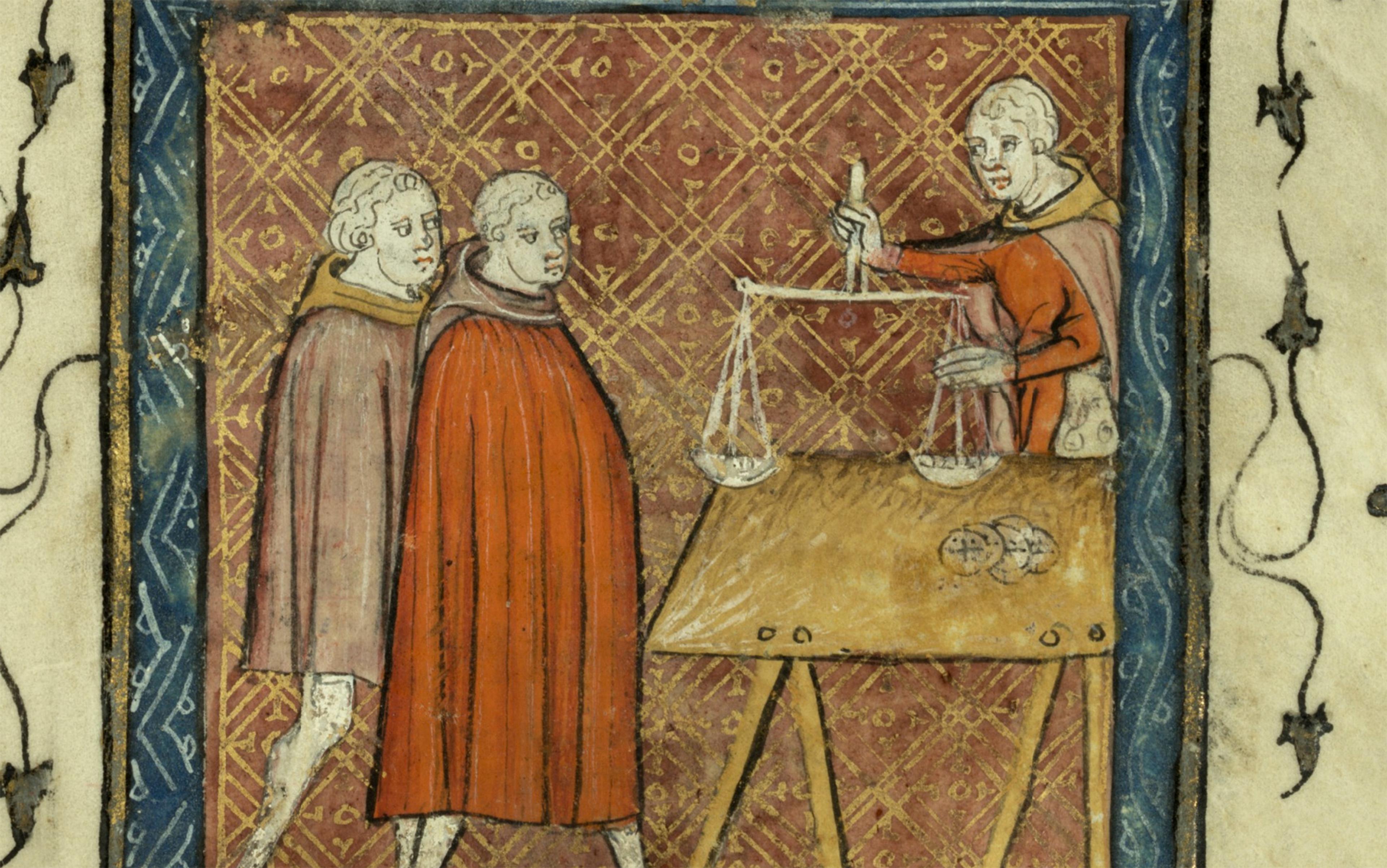
History of ideas
Reimagining balance
In the Middle Ages, a new sense of balance fundamentally altered our understanding of nature and society

What would Thucydides say?
In constantly reaching for past parallels to explain our peculiar times we miss the real lessons of the master historian
Mark Fisher

The environment
Emergency action
Could civil disobedience be morally obligatory in a society on a collision course with climate catastrophe?
Rupert Read

Return of the descendants
I migrated to my ancestral homeland in a search for identity. It proved to be a humbling experience in (un)belonging
Jessica Buchleitner

Economic history
Credit card nation
Americans have always borrowed, but how exactly did their lives become so entangled with the power of plastic cards?
Sean H Vanatta

Metaphysics
The enchanted vision
Love is much more than a mere emotion or moral ideal. It imbues the world itself and we should learn to move with its power
Mark Vernon

Essay on Mahabharata
Students are often asked to write an essay on Mahabharata in their schools and colleges. And if you’re also looking for the same, we have created 100-word, 250-word, and 500-word essays on the topic.
Let’s take a look…
100 Words Essay on Mahabharata
The mahabharata: an epic tale.
Mahabharata is one of the two major Sanskrit epics of ancient India. It’s a grand saga that tells the tale of two branches of a family – the Pandavas and the Kauravas – who engage in a great war.
The Characters
The epic is famed for its unique characters. Key among them are the virtuous Pandavas, the scheming Kauravas, the wise Krishna, and the loyal Draupadi.
The Teachings
The Mahabharata is not just a story; it’s a treasure trove of life lessons. The Bhagavad Gita, a part of this epic, is a revered spiritual guide.
The Cultural Impact
The Mahabharata has a profound impact on Indian culture and literature, influencing generations with its timeless wisdom.
Also check:
- 10 Lines on Mahabharata
250 Words Essay on Mahabharata
Introduction.
The Mahabharata, one of the two major Sanskrit epics of ancient India, is a grand narrative that encapsulates profound philosophical, ethical, and spiritual teachings. The epic, traditionally ascribed to the sage Vyasa, transcends the boundaries of a mere historical or mythological account, offering a universal exploration of life’s complex realities.
The Epic’s Structure and Scope
The Mahabharata is a colossal composition of over 100,000 shlokas or couplets, organized into eighteen books or parvas. It chronicles the conflict between the Pandavas and the Kauravas, two factions of the Kuru dynasty. However, the epic’s scope extends far beyond the war, delving into intricate human emotions, intricate moral dilemmas, and profound philosophical debates.
Philosophical Insights
The Bhagavad Gita, part of the Bhishma Parva, is the most renowned philosophical discourse in the Mahabharata. Lord Krishna’s dialogue with Arjuna, the Pandava prince, addresses the nature of duty, the path to liberation, and the essence of life and death. The Gita’s teachings have had a profound influence on various schools of Indian philosophy and spirituality.
Societal and Ethical Themes
The Mahabharata also explores societal and ethical themes. It scrutinizes the concept of dharma or righteous duty, highlighting its complexity and the dilemmas it can pose. The epic underscores the idea that actions have consequences, thus emphasizing the law of karma.
In conclusion, the Mahabharata is not just an epic; it’s a philosophical and ethical guide that has shaped Indian thought for centuries. Its timeless wisdom continues to be relevant, offering insights into the complexities of life and the human condition.
500 Words Essay on Mahabharata
The Mahabharata, one of the two major Sanskrit epics of ancient India, is an intricate narrative that encapsulates a multitude of themes – politics, philosophy, war, dharma (duty/righteousness), and karma (action and consequence). Composed over a period of centuries, it is often hailed as the longest epic poem in the world.
Origins and Composition
Traditionally attributed to the sage Vyasa, the Mahabharata’s exact date of composition remains uncertain, with scholars placing it between 400 BCE and 400 CE. It consists of over 100,000 shlokas or couplets, divided into 18 books, or ‘Parvas’. The epic is a ‘smriti’ text, considered to be human-made and thus open to interpretation and change, unlike ‘shruti’ texts, which are believed to be divine revelations.
Plot and Characters
The narrative revolves around the conflict between two sets of cousins: the Pandavas and the Kauravas, for the throne of Hastinapura. The central characters include the virtuous Yudhishthira, mighty Bhima, skilled archer Arjuna, and the enigmatic Krishna. The epic reaches its climax in the Kurukshetra war, a catastrophic conflict that decimates both sides, leaving the Pandavas victorious but morally defeated.
Philosophical Underpinnings
The Mahabharata is not merely a tale of kings and warriors; it is a profound exploration of ethics, duty, and destiny. The ‘Bhagavad Gita’, a dialogue between Arjuna and Krishna on the eve of the war, is a philosophical treatise that forms an integral part of the epic. It discusses concepts such as dharma, yoga, and moksha (liberation), providing insights into Hindu philosophy.
Impact and Influence
The Mahabharata has had a profound influence on Indian culture and thought. It has shaped societal norms, moral codes, and legal principles. The epic continues to inspire various forms of literature, art, and performance, from classical Sanskrit plays to modern television series. Its narratives and characters have been reinterpreted in numerous regional and vernacular versions, reflecting the diversity of Indian society.
In conclusion, the Mahabharata is a monumental work that combines history, mythology, philosophy, and ethics. It is a mirror of ancient Indian society, reflecting its social structures, political systems, and religious beliefs. Its enduring relevance lies in its exploration of universal themes such as duty, righteousness, and the consequences of actions. The Mahabharata, thus, remains a timeless epic, a testament to the complexity and depth of human experience.
That’s it! I hope the essay helped you.
If you’re looking for more, here are essays on other interesting topics:
- Essay on Madhya Pradesh
- Essay on Luck
- Essay on Unconditional Love of a Mother
Apart from these, you can look at all the essays by clicking here .
Happy studying!
Leave a Reply Cancel reply
Your email address will not be published. Required fields are marked *
Save my name, email, and website in this browser for the next time I comment.


COMMENTS
Essay on Mahabharata In Sanskrit Language. इस आर्टिकल मे हम संस्कृत भाषा मे महाकाव्य महाभारत पर निबंध (Essay on Mahabharata In Sanskrit Language) आपके साथ शेअर कर रहे है। महाभारत १,०० ...
महाभारत-आिदपव अन मणीपवु १ अ ाय००१. . . . . . . . . . . . . . . . . . . . . . १
Index. 1. Introduction and authorship; 2. Book editions; 3. Translated verses; 4. About Sanskrit; Introduction and authorship: The Mahābhārata (महाभारत, mahabharata) is a Sanskrit book written by Vyāsa: The largest epic poem in the world, consisting of 100,000 verses. It contains the history of ancient India and the exploits of its heroes, such as the fate of the Kauravas and ...
Summary: The Sanskrit edition of the Mahabharata, one of the largest epic poems ever written, consisting of 100,000 metrical verses.Consisting of 18 books, the Mahabharata details the history and legends concerning ancient India (Bharata), including a major battle campaign involving the Kauravas and the Pandavas, also known as the Kurukshetra War.
In 1998, we made the e-text of the sanskrit epic Mahabharata (Bhandarkar Oriental Research Institute BORI Critical Edition typed by Prof. Tokunaga) available for the first time on the world wide web in devanagari script. The files were converted using ITRANS and the web pages were in xdvng font . In 2013, the site has been updated to include ...
The Sanskrit edition of the Mahabharata, one of the largest epic poems ever written, consisting of 100,000 metrical verses. Consisting of 18 books, the Mahabharata details the history and legends concerning ancient India (Bharata), including a major battle campaign involving the Kauravas and the Pandavas, also known as the Kurukshetra War.
Mahabharat Long Essay in Sanskrit - महाभारत पर संस्कृत निबंध 0 0 Sunday 14 October 2018 2018-10-14T02:42:00-07:00 Edit this post
His Mahabharata is the most complete in any language, comprising all the slokas included in all recensions of the work. In addition to the Mahabharata, his translations from Sanskrit included a number of other religious and literary works, including 21 of the Upanisads, as well as plays and lyric poetry. ...
This the Sanskrit text of the Mahabharata in Sanskrit. This is derived from electronic files created by Prof. Muneo Tokunaga of Kyoto and edited by John D. Smith. Their data was used to generate parallel Devanagari and Romanization, using custom C programs created at sacred-texts. This text has been cross-referenced with Ganguli's English ...
Essay On Mahabharata in Sanskrit. ... Also Read: Essay on Himalaya Mountain Essay on Ideal Citizen Essay on Indian Heritage Essay on Janmbhumi Essay on Kalidas Essay on Kalidas. Essay on Lord Mahavir In Sanskrit. Sanskrit Essay on Maharishi Valmiki. Leave a Comment Cancel reply. Comment. Name Email Website. Newsletter. Search for:
In 1998 we converted to devanagari the CSX version files prepared by Prof. John Smith based on the original encoding of Mahabharata by Prof. Muneo Tokunaga of Kyoto, Japan. Prof. Tokunaga's files were based on the critical edition of Mahabharata, published by Bhandarkar Oriental Research Institute (BORI). The comprehensive Prolegomena ( Vol.I ), written by V. S. Sukhtankar, the general editor ...
Essays and criticism on Anonymous' Mahabharata - Critical Essays. ... In its present form in Sanskrit, TheMahabharata runs to some 200,000 verses in couplets (slokas), in eighteen sections or ...
Mahabharata Manuscript illustration of the Battle of Kurukshetra Information Religion Hinduism Author Vyasa Language Sanskrit Period Principally compiled in 3rd century BCE-4th century CE Chapters 18 Parvas Verses 200,000 Full text Mahabharata at Sanskrit Wikisource Mahabharata at English Wikisource Part of a series on Hindu scriptures and texts Shruti Smriti List Vedas Rigveda Samaveda ...
Essay on Mahabharata in Sanskrit - महाभारत पर संस्कृत निबंध. June 11, 2019 by essaykiduniya. Here you will Get Information about Mahabharata in Sanskrit Language. Get Essay on Mahabharata in Sanskrit Language - महाभारत पर संस्कृत निबंध.
'Mahabharata Vol. 8 (Shanti Parva) Sanskrit Text With English Trans. Edited By Dr. Ishvar Chandra Sharma And Dr. O.N. Bimali, Parimal Sanskrit Series 60 - Parimal Publications, Delhi' Addeddate 2022-12-10 18:19:08
Mahabharata, one of the two Sanskrit epic poems of ancient India (the other being the Ramayana).The Mahabharata is an important source of information on the development of Hinduism between 400 bce and 200 ce and is regarded by Hindus as both a text about dharma (Hindu moral law) and a history (itihasa, literally "that's what happened").Appearing in its present form about 400 ce, the ...
The essays in this book have been written by world-class scholars. They help the reader gain a sophisticated and in-depth understanding of Jain dharma and darśana, bhakti and adhyātma, sādhanā and ārādhanā. ... He is the only person in the world to translate both the Ramayana and the Mahabharata from Sanskrit into English. We are proud ...
Addeddate 2021-09-06 08:50:13 Identifier mahabharata-by-gita-press-in-hindi-and-sanskrit Identifier-ark ark:/13960/t5bd69s2p Ocr
Essays on the Mahābhārata, edited by Arvind Sharma, Brills Indological Library, 1 (E.J. Brill, Leiden, 1991) ... Old and New," the second of which, in contrasting K. Santhanam's1963 short story with the original Sanskrit epic, belongs also with the numerous articles on later works based on the Mahabhdrata. ... Studies on the Mahabharata ...
The Mahabharata was first written down in Sanskrit, ancient India's premier literary language, and ascribed to a poet named Vyasa about 2,000 years ago, give or take a few hundred years. The epic sought to catalogue and thereby criticise a new type of vicious politics enabled by the transition from a clan-based to a state-based society in ...
500 Words Essay on Mahabharata Introduction. The Mahabharata, one of the two major Sanskrit epics of ancient India, is an intricate narrative that encapsulates a multitude of themes - politics, philosophy, war, dharma (duty/righteousness), and karma (action and consequence).